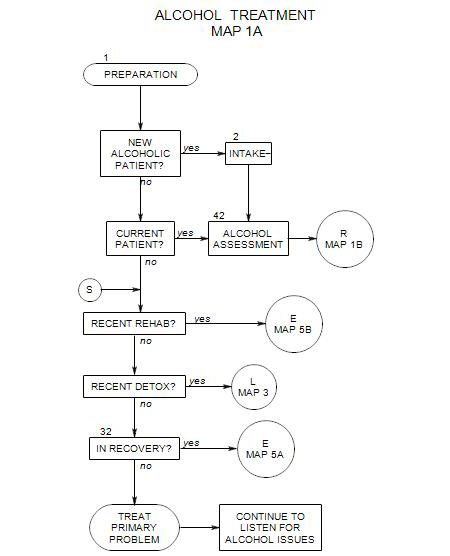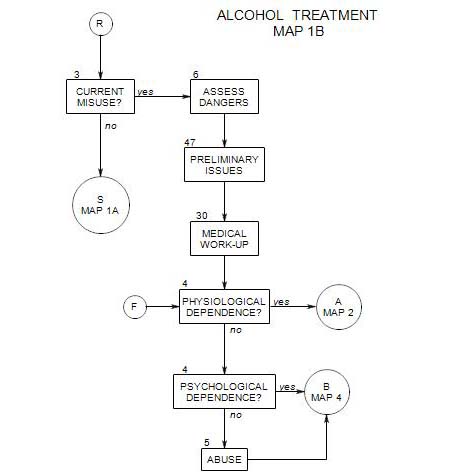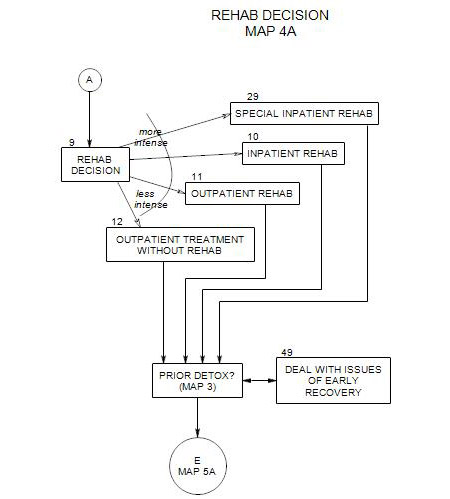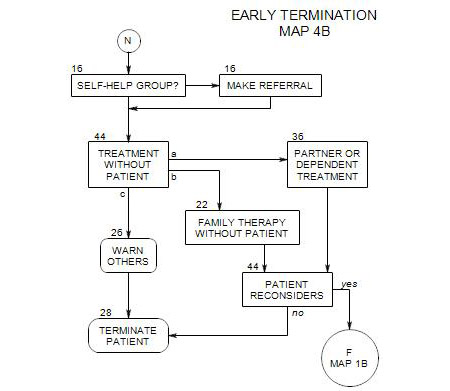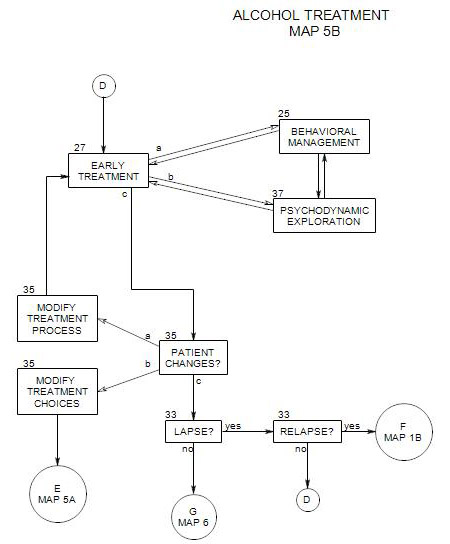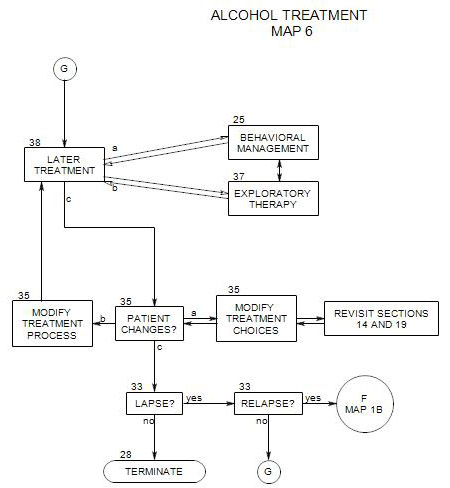49. DEALING WITH COMMON SYMPTOMS OF EARLY RECOVERY
- Follows rehabilitation [Section 10, 11, 12 or 29] for a formerly physiologically addicted person. These choices are shown on Map 3. It leads to Section 20 on Map 5, where ongoing treatment begins.
A person who has been physiologically addicted to alcohol has a lot of recovering to do. His/her body processes have been distorted to accommodate to the drug and his/her life has been misdirected.
Immediate symptoms of detoxification from physiological dependence on alcohol have been discussed in Section 7. Ongoing symptoms of physiological dependence can include difficulty sleeping, persistent cravings for alcohol, inability to experience pleasure, disorientation, nausea, or headaches.
Over time, if the person remains abstinent, his/her body and brain will return toward normal functioning, and these symptoms will diminish. However, both their initial severity and the time it takes for them to be reduced substantially can vary from person to person, depending on several factors. Among the factors are the amount the person was drinking when dependent and the length of his/her dependency; as well as whether the patient went for rehabilitation, and for how long and how effective it was.
Other symptoms may emerge as the patient continues in sobriety, symptoms that may have been masked by the person’s drinking.
DIFFICULTY SLEEPING can involve several phases and varying degrees of intensity and length of time.
- An acute phase, lasting up to two weeks after the start of abstinence, in which there can be severe sleep disturbance. This is best treated in a hospital setting where the patient can be continually monitored and his/her medication controlled.
- A second phase, lasting up to six months, in which sleep continues to be disturbed. Prolonged sleep deprivation or disturbance can lead to relapse and must be addressed.
Cognitive-behavioral treatment of sleep difficulties in this phase includes (Reite, Ruddy and Nagel, 1997, pp. 100-107)]
- regular exercise
- consistent bedtime and (especially) awakening time
- relaxation prior to bed
- avoiding stimulants, like coffee, prior to sleep
- snacks of high tryptophan foods (banana, milk, cookie)
- avoiding worry in bed
- not using bed for activities other than sleep or sex
- comfortable and quiet sleep environment
CRAVINGS
Cravings are strong urge to drink or engage in activities that lead to drinking. The urges may appear to be irresistible. They may be triggered by an identifiable thought or situation or appear to come out of the blue. Cravings diminish over time in both intensity and frequency if the person remains abstinent. If person has been in rehab, there may be some reduction already; however, he/she may continue to get them for a long time after becoming sober. For a more extended discussion of cravings, see Section 27. Medication to deal with cravings is discussed in Section 48.
OTHER PSYCHOLOGICAL DISTURBANCES, such as anxiety, agitation, depression, or rapid mood swings may become apparent once the patient has stopped drinking. What is not apparent is whether they are lingering effects of alcohol or independent disorders that the alcohol was masking. In the latter case, masking of other disturbances may have been part of the patient’s motivation for drinking.
It is difficult to distinguish other psychological disturbances from residual alcohol effects before the patient has been sober for several (commonly: at least four) weeks. As time passes and the patient’s brain and body adjust to sobriety, alcohol-related symptoms should diminish and anything remaining can more easily be attributed to other problems. This is one of the reasons for offering rehabilitation after detoxification and recommending an extended period of abstinence.
Many alcoholic patients also have psychological consequences that are results of the impact of drinking on their behavior and life. They may remember things they said or did while drinking –drunken actions and attitude, arrests for drunk driving or other misbehavior; accidents or violence while drinking; loss of a job due to drinking; financial losses; and so on.
Associated personality disturbances may include
- low self-esteem and lack of self-confidence
- chronic rage or anger and resentments
- guilt for harm done to others
- shame for drunken behavior
- fears and anxieties
- grandiosity
- attempts to minimize difficulties
- avoidance of emotions
- self-pity and blaming of others
- low frustration tolerance
The patient needs psychotherapeutic and medical treatment for all disruptive symptoms, both because they could be symptoms of disturbances needing treatment and because any stressful symptoms, if untreated, can lead the patient to relapse (via a return to self-medication). [cf. Section 19 (Adjunctive Care Decision)].
